Once upon a time in the Magical Land of Equestria...
A Survey of the Mythology of My Little Ponies: Friendship is Magic
By Kitsula Tsulakala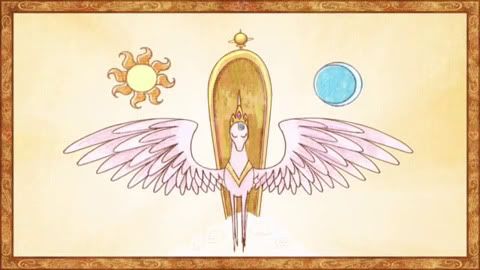
Of Aztec Mares and Indian Hares
The new animated series My Little Ponies: Friendship is Magic (MLP:FiM) starts out (as depicted in S01:E01-02 'The Mare in the Moon' & 'The Elements of Harmony') with a myth involving two divine Sisters: One who became known as Princess Celestia, who controls the Sun, and Princess Luna, who controls the Moon. At first there is balance but over time Luna becomes resentful and jealous of her solar sister and is transformed into the demonic Nightmare Moon. Nightmare Moon then refuses to let night pass and the sun to rise thus engulfing Equestria in eternal night. Reluctantly, Celestia uses the magic of the Elements of Harmony in battle against her sister defeating her and banishing her into the moon itself where she became the Mare in the Moon (which explains the features on the moon that looked like a horse). Celestia then became the sole ruler of the heavens controlling the entire sky returning harmony to the land of Equestria... At least until the Summer Solstice 1,000 years later when the stars are right to aid her escape...
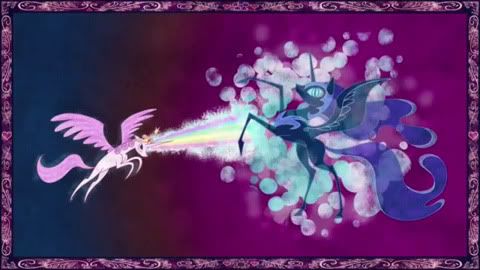
While this central myth in MLP:FiM is a compound of many myths involving quarrels between the Sun & the Moon it seems to bear the closest relation to the myth of the birth of the Aztec Sun God Huitzilopochtli:
The Myth of Huitzilopochtli as recorded in the Florentine Codex describes the birth of sun god Huitzilopochtli from the goddess Coatlicue. Fearing the child, the moon goddess Coyolxauhqui and the four hundred gods of the stars prepare for war to destroy Coatlicue and the young sun god. Preparing for battle Huitzilopochtli arms himself with a magical serpent staff made of candlewood. Setting it alight he enters battle against Coyolxauhqui and the Stellar Gods. Using the power of the flaming serpent staff Huitzilopochtli defeats Coyolxauhqui and the Stellar Gods. Huitzilopochtli then dismembers Coyolxauhqui and takes the emblems and powers of Coyolxauhqui and the Stellar Gods which Huitzilopochtli fixes into his own destiny to become the sole ruler and controller of the celestial sky.
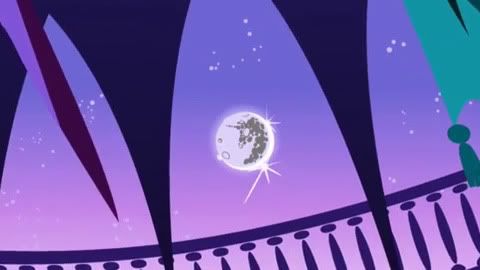
One can see the obvious parallels between Aztec and Pony Mythology such as the battle between the Sun and Moon due to jealousy, the use of a magic object to defeat the moon, and the Sun's ascent to sole ruler and controller of the celestial sphere. But what of the Mare in the Moon? The Mare in the Moon seems deprived from and to be a pun of the Indian Myth of The Hare in the Moon:
In this story Indra, the king of the gods, descends to the earth disguised as a staving beggar. The beggar who had been turned away by others finally asks for hospitality from a hare. The hare having nothing decides to offer himself to the staving beggar. The hare jumps into a pot intending to cook himself but the fire under the pot freezes as the fire god Agni will not allow it to burn the hare. Indra is so impressed with the hare's extreme hospitality that he reveals himself as Indra, king of the gods, and honors his host by painting the figure of the hare onto the moon as a testament for all time of the hare's hospitality.
But what of the stars which must be right to aid the escape of Nightmare Moon? This element seems to be taken from classic horror writer H.P. Lovecraft's Cthulhu Mythos. In Lovecraft's stories the Great Old One Cthulhu waits in dreamless sleep imprisoned in his sunken city of R'lyeh. When the stars are right however Cthulhu has an opportunity to escape so he can rain destruction and insanity upon the earth and take it over along with the rest of the the Great Old Ones.
Getting back to Pony Mythology: on the day of the Summer Solstice Celebration – the longest day of the year – Nightmare Moon escapes and kidnaps Princess Celestia again bringing darkness to Equestria.
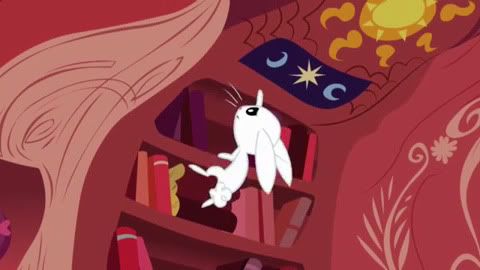
This bit of the mythology seems to stem from a couple of sources: First the Modern Wiccan Myth of the Holly and Oak Kings who battle each solstice for domination. During the Summer Solstice the Oak King, who represents the light half of the year where the heat and the light of the sun reigns supreme, is vanquished by the Holly King, who represents the dark half of the year where the cold and darkness of night reigns supreme.
Another parallel to Pony Mythology comes from the Scottish myth of Brìghde and Cailleach Bheur. The fire goddess Brìghde rules the warm half of the year from Bealltainn (May 1) to Samhainn (November 1) however on Samhainn the winter queen Cailleach Bheur kidnaps and imprisons Brìghde during the cold half of the year much like Nightmare Moon's imprisonment of Princess Celestia.
The Classical Elements of Harmony
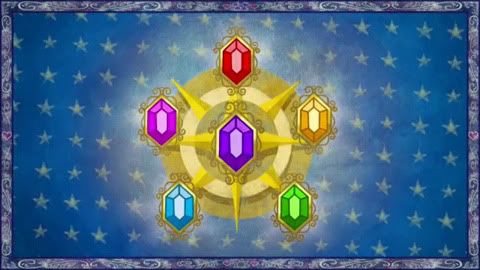
Continuing the Pony narrative: Twilight Sparkle, the unicorn and student of magic under Princess Celestia, must use all her knowledge of myth and magic to harness to the power of the Elements of Harmony to defeat Nightmare Moon and free Princess Celestia to restore harmony to Equestria. The five elements of Harmony are Honesty, Kindness, Laughter, Generosity, and Loyalty. There is also a sixth element which appears when all five are present – Magic or Friendship. These elements are matched up to the main characters of the series who discover their elemental powers and harness them to defeat Nightmare Moon and free Princess Celestia. The main ponies are matched up with the following elements:
Applejack – Honesty
Fluttershy – Kindness
Pinky Pie – Laughter
Rarity – Generosity
Rainbow Dash – Loyalty
Twilight Sparkle – Magic or Friendship
Following this Nightmare Moon transforms back into Princess Luna and returns with Princess Celestia to the mountaintop city of Canterlot where they return to rule Equestria although Princess Celestia maintains her role has the supreme ruler of the land and sky.
The Elements of Harmony bear a resemblance to Classical Elements of Greece and India. The Classical Four Elements are Water, Fire, Earth, and Air. Along with these elements there is a fifth 'element': the quintessence which is also variously called aether, akasha, spirit, heaven, space, or void. This Element is the source from which the other four elements spring. The quintessence also permeates and sustains the other elements. Thus when all four elements are combined one can return again to the primal element which is identified with the quintessence.
The Classical Elements can even somewhat be matched up to the Elements of Harmony with one repetition:
Earth – Applejack – Honesty
Water – Fluttershy – Kindness
Air – Pinky Pie – Laughter
Water – Rarity – Generosity
Fire – Rainbow Dash – Loyalty
Quintessence – Twilight Sparkle – Magic or Friendship
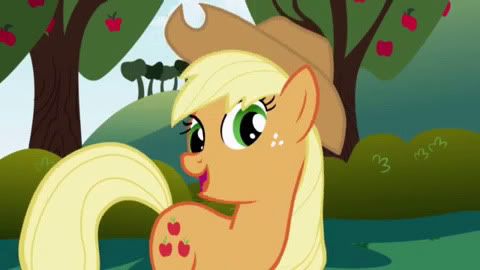
Earth matches up with Applejack and Honesty as this Earth Pony grounds the rest of group through honesty, works as a farmer, and as a flaw she has a stubborn streak (which she displays in episode S01:E04 'Applebuck Season') which are all earthy traits.
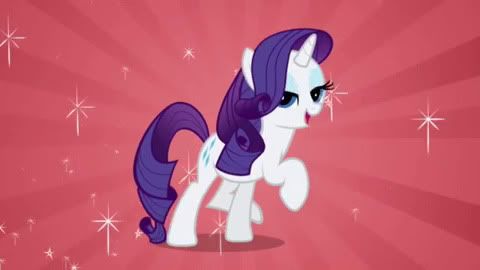

Water matches up with Fluttershy and Rarity who are the most emotional of the group which marks their watery nature with their emotional compassion. Both Kindness and Generosity are watery compassionate traits. The main difference between the two is that Fluttershy is introverted while Rarity is extroverted.
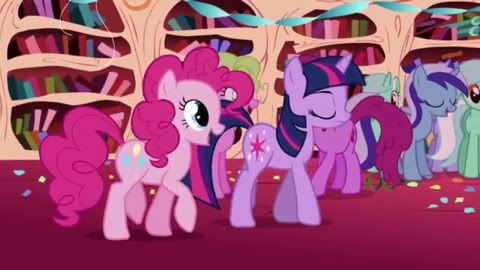
Pinky Pie and Laughter match up with Air as Pinky Pie is an air head who has problems focusing. While Pinky Pie is an air head she also has glimmers in which she shows her knowledge such being able to quickly use logic to locate books (as seen in episode S01:E02 'Elements of Harmony') or as having the foresight to see the danger of the Parasprites and figuring out how to stop them (as seen in S01:E10 'Swarm of the Century'). She also lightens up the group with her laughter – an airy operation.
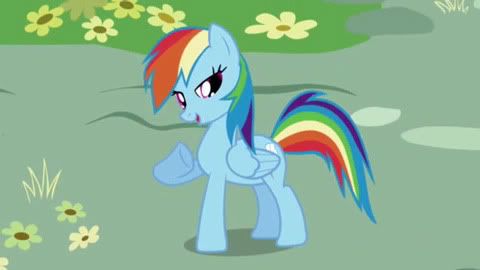
Rainbow Dash matches up with Fire quite easily as she is a very quick, temperamental, passionate, and boastful pony which all mark her very fiery nature. Loyalty is less of a match for fire itself, but it is displayed by her courage (a fiery trait) in that she consistently puts her friends' safety before herself when they are in danger.
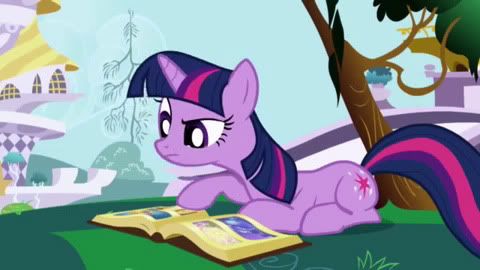
Twilight Sparkle is the Quintessence of the group as she is the leader and glue of the main group of ponies, it is she who helps to sustain and enrich the entire group through her friendship. It is only though their friendship that Twilight Sparkle herself is complete and can work her magic to the the full extent of her power. Friendship is equated to the Quintessence as it permeates and sustains the group, while Magic equates to its powerful and mystical qualities.
As a further observation on the central myth like Zeus ruling from atop Mt. Olympus and Indra ruling from atop Mt. Meru, Princess Celestia is seen ruling the land and the skies from the mountaintop celestial city of Canterlot.
The Twilight Mithra
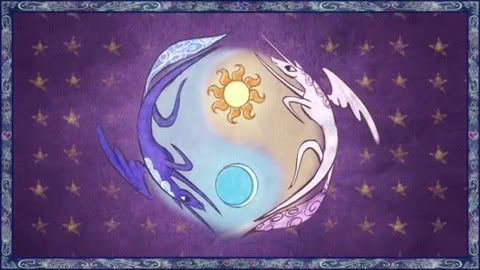
Looking again Twilight Sparkle's form and name: Twilight's name and coloration places her between the light and the dark. Additionally she functions as the emissary of Princess Celestia to promote harmony and friendship.
Interestingly this links Twilight with a Persian form of Mithra. In the Zurvanist thought of the Sassanian era, Mithra functioned as a emissary of the god of light, Ahura Mazda, and was responsible for mediating between Ahura Mazda and the god of darkness, Angra Mainyu, in order to create harmony.
In another linkage the modern form of Mithra in Farsi, Mehr, has three meanings: Love, Sun, and Friend. All of which relate to Twilight Sparkle.
Cutie Dharman
Another important part of Pony Mythology is the 'Cutie Mark' (as highlighted in Episodes S01:E12 'Call of the Cutie' & Episodes S01:E18 'The Show Stoppers'): As ponies grow up they must discover their unique talent and place in pony society. When they discover this an emblem related to their talent/role appears on their flank as a 'Cutie Mark'. This is similar to the Indian concept of Dharman/Dharma which is one's role in the cosmic order or Rta. This is illustrated in the later Indian story of the Ascetic and the Scorpion:
One day an old ascetic saw a scorpion drowning in the water of a river. The ascetic retrieved the scorpion which promptly stung him. The ascetic smiled and released the scorpion onto the shore. When asked why he did not get angry at the scorpion for harming him, the ascetic replied that just as it was his dharma to come to the aid of all creatures, it was the scorpion's dharma to string – all functioning according to the cosmic order.
This can also be related to Aleister Crowley's religious philosophy of Thelema in his concept of the 'True Will'. The 'True Will' is one's purpose or function in life and the path of action that maintains harmony in the cosmos. This is the Will meant in Crowley's (in)famous phrase 'Do what thou wilt shall be the whole of the law' as when one is acting out one's true function in the cosmic order harmony prevails.
As an aside Twilight Sparkle's Cutie Mark resembles the Unicursal Hexagram symbol which frequently appears and is used in the Thelemic system.
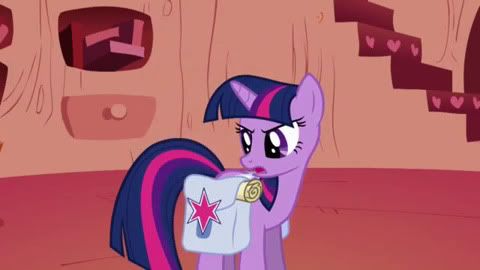
Bibliography
Amore, Roy C. and Larry D. Shinn. The Hare in the Moon in Lustful Maidens & Ascetic Kings: Buddhist and Hindu Stories of Life. New York: Oxford University Press. 1981.
Aztec-Indians.com. Aztec Gods: The Rituals, the Sacrifices, and the Myths. Aztec-Indians.com. http://www.aztec-indians.com/aztec-gods.html (accessed March 31, 2011).
Demariaux, Jean-Christophe. How to Understand Hinduism. London: SCM Press Ltd. 1995.
Emick, Jennifer. Brighid. netplaces. http://www.netplaces.com/celtic-wisdom/the-divine-female/brighid.htm (accessed March 31, 2011).
Flood, Gavin. An Introduction to Hinduism. New York: Cambridge University Press. 1996.
Gwydion. Brigid - The Goddess of Imbolc and Celtic Europe. Realmagick.com. http://www.realmagick.com/6807/brigid-the-goddess-of-imbolc-and-celtic-europe/ (accessed March 31, 2011).
Kaczynski, Richard. The Weiser Concise Guide to Aleister Crowley. Edited by James Wasserman. San Francisco: Weiser Books. 2009.
Knappert, Jan. Hare in Indian Mythology: An Encyclopedia of Myth and Legend. 115. London: Diamond Books. 1995.
Living on Earth. Mara Freeman. Living on Earth. http://www.loe.org/shows/segments.html?programID=07-P13-00052&segmentID=1 (accessed March 31, 2011).
Markman, Roberta H. and Peter T. Markman. The Flayed God: The Mesoamerican Mythical Tradition. New York: HarperCollins Publishers. 1992.
My Little Pony: Friendship is Magic. first broadcast 10 October 2010 by The Hub. Developed by Lauren Faust.
Nabarz, Payam. The Mysteries of Mithras: The Pagan Belief That Shaped the Christian World. Rochester: Inner Traditions. 2005.
Ngawang, The Scorpion and the Old Man. The Dharma Corner. http://www.dharmacorner.net/2009/06/scorpion-and-old-man.html (accessed March 31, 2011).
Ratrija, Adhitin and N. Agnayi. Why Vedism. Ár nDraíocht Féin: A Druid Fellowship, Inc. http://www.adf.org/rituals/vedic/why-vedism.html (accessed March 31, 2011).
Sanatan Society. The Saint and the Scorpion. Sanatan Society. http://www.sanatansociety.org/indian_epics_and_stories/the_saint_and_the_scorpion.htm (accessed March 31, 2011).
Wigington, Patti. The Legend of the Holly King and the Oak King. About.com. http://paganwiccan.about.com/od/yulethelongestnight/p/Holly_KIng_Yule.htm (accessed March 31, 2011).
Wikipedia. Cailleach. Wikipedia. http://en.wikipedia.org/wiki/Cailleach (accessed March 31, 2011).
Wikipedia. Cthulhu. Wikipedia. http://en.wikipedia.org/wiki/Cthulhu (accessed March 31, 2011).
Wikipedia. Dharma. Wikipedia. http://en.wikipedia.org/wiki/Dharma (accessed March 31, 2011).
Wikipedia. Zurvanism. Wikipedia. http://en.wikipedia.org/wiki/Zurvanism (accessed March 31, 2011).
This made my day, thank you.
ReplyDeletePeople have no life
ReplyDeleteAWSOMNESS you created
Wow, that was... thorough. I wonder how much research Faust et al. did on mythology?
ReplyDeleteOh God, that was great! Also I didn´t see the similitudes between Huitzilopochtli and the war of the god and the moon. Here in Mexico they teach us that since elementary school hehe, and I didn´t remember that. Great article.
ReplyDeleteBut what about the four stars? Generic celestial goddess? Spirits? Demons? Sorry if I left that unread.
Thanks for the great comments.
ReplyDeleteEl Maya: I was mostly going by what was stated about the myth in Markman & Markman's The Flayed God - so mileage with what is taught in Mexico my very. Markman & Markman focused on the myth as relating to the recurring drama of the sunrise.
The points of similarity of the Pony story and the Aztec myth (as stated by Markman & Markman) being the moon/night trying to prevent the sun from rising, the sun's use of a magical artifact to secure victory, and the sun becoming the ruler and controller of heaven.
For the stars, I think that was related to the stars being right to allow escape ala Cthulhu in Lovecraft's Cthulhu Mythos.
Why force a 5 element system into a 4 element system?
ReplyDeleteEarth - Applejack, for all the reasons you noted.
Fire - Rainbow Dash, for all the reasons you noted.
Water - Rarity, for all the reasons you noted.
Wood - Fluttershy, as wood represents all forms of life.
Metal - Pinkie Pie, as metal is the element of society, ingenuity, and invention.
Still leaves Twilight Sparkle as aether, but without overly tilting the scales towards the element of water.
I chose to focus on the four element system simply because I saw more similarity with the concept of Quintessence and the 6th Element in MLP:FiM. Although you can certainly map the Chinese Five Elements onto the ponies, the Chinese Elements have no corresponding concept of an Quintessence 'Element' to my knowledge (and I could be wrong here).
ReplyDelete